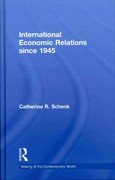Question
Consider an exchange economy with two consumers: Charlotte and Dylan, and two goods: quinoa (Q) and raspberries (R). Charlotte has an initial endowment of 99.6
Consider an exchange economy with two consumers: Charlotte and Dylan, and two goods: quinoa (Q) and raspberries (R). Charlotte has an initial endowment of 99.6 units of quinoa and 76 raspberries. Dylan has 124.4 units of quinoa and 78.1 raspberries.
Charlotte's utility function is given by UC=QC1/2 RC1/2 , where QC and RC are her consumption of Q and R, respectively. Dylan's utility function is given by UD=QD1/3 RD2/3, where QD and RD are his consumption of Q and R, respectively.
Suppose that the market price of quinoa is pQ=2 and the market price of raspberries is pR=1.
1. Keeping the price of raspberries normalized at pR=1, find the market clearing price of quinoa, pQ. (Hint: write the value of the initial endowment for each consumer as a function of pQ. Then, using the utility maximizing condition along with the budget constraint, find the optimal choice of Q for each consumer as a function of pQ. Finally, use the market clearing condition, which states that the total consumption of Q must be equal to the total endowment of Q in the economy, to solve for pQ. Keep your numbers as precise as possible at all stages of the calculation, and only round your final solution to the second decimal point.)
Step by Step Solution
There are 3 Steps involved in it
Step: 1

Get Instant Access to Expert-Tailored Solutions
See step-by-step solutions with expert insights and AI powered tools for academic success
Step: 2

Step: 3

Ace Your Homework with AI
Get the answers you need in no time with our AI-driven, step-by-step assistance
Get Started


